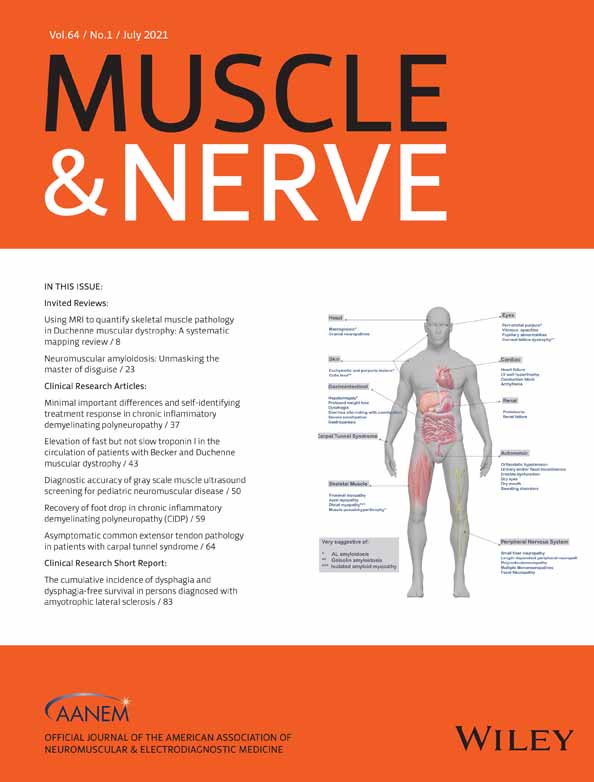Assessment of clinical factors affecting outcome of myasthenia gravis
Funding information: Osaka Medical College; Myasthenia Gravis Foundation of America
Abstract
Introduction/Aims
In myasthenia gravis (MG) therapy, achieving Myasthenia Gravis Foundation of America minimal manifestation (MM) or better status is proposed as a desirable target. However, this level of control is often not achieved and clinical factors affecting prognosis remain unclear.
Methods
Participants were 104 consecutive patients with MG who visited Osaka Medical College Hospital. We retrospectively assessed the association of clinical and laboratory features at baseline with prognosis. Eighty patients who achieved MM or better status were classified as the good outcome group and the remaining 24 patients were classified as the poor outcome group.
Results
The rate of dysphagia at baseline was significantly higher in the poor outcome group than in the good outcome group (P = .002). The levels of serum total protein and albumin at baseline were both significantly lower in the poor outcome group than in the good outcome group (P = .036 and P = .014, respectively). In addition, Controlling Nutritional Status scores at baseline were significantly higher in the poor outcome group than in the good outcome group (P = .043). Multivariate analysis using a Cox proportional hazards model showed that dysphagia (hazard ratio [HR], 6.92; 95% confidence interval [CI], 1.49-40.31) and hypoalbuminemia (HR, 2.57; 95% CI, 1.04-6.57) at baseline were risk factors that predicted prognosis.
Discussion
These findings suggest that dysphagia and hypoalbuminemia at baseline are associated with outcomes and are predictive risk factors for poorer outcomes in patients with MG.
CONFLICT OF INTEREST
None of the authors has any conflict of interest to disclose.
Open Research
DATA AVAILABILITY STATEMENT
Data available on request from the authors




